|
Learn about what to check when proofreading page proofs prior to publication.
|
|
TABLE 1
Text |
Type of prose |
Psychic distance between narrator and reader
|
|
‘Spoiler,’ said Reynolds. ‘I re-interviewed the surviving witnesses and they agreed that Anthony Lane opened fire at the Mary Engine and the jars on the rack. Before you ask, they were both interns and didn’t know where the items had come from.’
|
Direct speech
|
Wider
|
|
The dead guy, a certain Branwell Petersen, MIT graduate and former Microsoft employee, had died, the witnesses thought, because he stepped between the shooter and the Rose Jars.
|
Implied dialogue
|
Closer
|
|
‘The interns said he threw himself into the line of fire,’ said Reynolds. ‘As if his life was less important.’
|
Direct speech
|
Wider
|
2. Summarising to avoid repetition
A narrative summary enables authors to imply the spoken sharing of information without actually putting the whole conversation down on paper twice.
EXAMPLE
In the excerpt in Table 2a below, the protagonist – with the help of a companion – has escaped from an unknown location after being kidnapped.
|
TABLE 2a
Text |
Type of prose |
|
I stopped to orientate myself and spotted a street sign – Coldharbour Lane. I’d been in bloody Brixton the whole time. […] I wanted off the street, but didn’t want to put a random homeowner in danger. Instead we ran left towards the train station.
|
Narrative: Location of lair
|
|
[…] After less than a hundred metres, Foxglove was showing signs of serious distress and I felt her stumble a couple of times, but we’d reached the shopping parade by then and fortunately the Nisa Local was still open. A nervous black girl of about fifteen who was manning the tills gave us a weary look of disgust as we rushed in. Then got all confused when I told her I was a police office and that I needed to use a phone.
[…] I retreated with Foxglove into the corner where we’d be hidden by the shelves and called Guleed. |
Narrative: Location of store
|
|
[…] Guleed picked up, and I said, ‘We’re in the Nisa Local near Brixton Station and Chorley’s lair is on Coldharbour Lane.’
|
Direct speech: Repetition of narrative x2
|
But actually, I’ve butchered it. The real excerpt from pp. 329–30 of Lies Sleeping, also by Ben Aaronovitch, looks like this:
|
TABLE 2b
Text |
Type of prose |
|
I stopped to orientate myself and spotted a street sign – Coldharbour Lane. I’d been in bloody Brixton the whole time. […] I wanted off the street, but didn’t want to put a random homeowner in danger. Instead we ran left towards the train station.
|
Narrative: Location of lair
|
|
[…] After less than a hundred metres, Foxglove was showing signs of serious distress and I felt her stumble a couple of times, but we’d reached the shopping parade by then and fortunately the Nisa Local was still open. A nervous black girl of about fifteen who was manning the tills gave us a weary look of disgust as we rushed in. Then got all confused when I told her I was a police office and that I needed to use a phone.
[…] I retreated with Foxglove into the corner where we’d be hidden by the shelves and called Guleed. |
Narrative: Location of store
|
|
Guleed picked up, and I told her where I was, and where Chorley’s lair was, and let her get on with it.
|
Implied dialogue
|
The repetition is gone. Instead, of laboured direct speech that tells readers what they already know, the implied dialogue is taut and pacy, and lets us move on to the next part of the scene.
Summarising information via implied dialogue doesn’t necessarily reduce the word count, but that’s fine. The goal is not to necessarily to reduce the number of words (though that may be the result) but to keep the reader interested and drive the story forward.
3. Breaking up would-be monologues
However, when there’s a lot of detail, that information can turn into what feels like a monologue. The reader can end up dislocated from the environment, as if the speaker is talking in a vacuum or floating in white space. You might see this referred to as ‘talking heads syndrome’.
Implied dialogue is the antidote. It breaks up the dialogue so that while some of what was said is rendered in direct speech, chunks of it are voiced by the narrator. That is, what was actually spoken by the non-viewpoint character is implied.
EXAMPLE
In Table 3 below is a fine example from False Value again, this time on p. 287. Consider how long Reynolds’s spiel would have been if Aaronovitch hadn’t broken it up by allowing the protagonist and first-person narrator, Peter Grant, to bear some of the burden.
It’s implied that the 113 words about what happened on August 2015 were spoken by Reynolds, but it’s Grant who delivers the information to the reader on her behalf. The monologue has been avoided but we know exactly how that conversation went.
|
TABLE 3
Text |
Type of prose |
Psychic distance between narrator and reader
|
|
I flipped the master power switch as soon as I was inside and pulled a Coke out of the fridge to serve as a coffee substitute while I waited for my PC to boot up. As soon as Skype was running, Reynolds’s call flashed up.
|
Narrative
|
Closer
|
|
‘What was all that about?’ I asked when I saw her face.
|
Direct speech
|
Wider
|
|
‘Skinner’s been connected to another case,’ she said.
|
Direct speech
|
Wider
|
|
At 10.15 on a Monday morning in August 2015, one Anthony Lane walked into the offices of an obscure tech start-up in San Jose carrying a concealed handgun. He talked his way past the receptionist before using the threat of force to gain access to the secure area at the rear and then, once he was in, opened fire. One person was killed instantly, two others were wounded and Lane himself was shot eight times in the back by a responding police officer. The attack barely made the news, being just one of several hundred to several thousand – depending on where you set the parameters – of active shooter incidents so far that year.
|
Implied dialogue
|
Closer
|
|
‘It wasn’t on my list,’ said Reynolds, ‘because the perp was dead.’
|
Direct speech
|
Wider
|
4. Making direct speech more impactful
EXAMPLE
The excerpt in Table 4 is from p. 369 of Lies Sleeping. The author uses a combination of direct speech, implied dialogue and narrative to present a coherent telling of the what the characters are saying and doing.
In this case, the implied dialogue is how readers know about the relatively mundane conversations that have taken place between the characters, but note in particular the penultimate line in which we learn that Guleed said she’d been about to phone.
What that does is put her closing direct speech centre stage. And that’s right and proper because it’s anything but mundane. It’s a section-closer that drips with suspense and tension – compelling the reader to turn the page so they can find out more about the problem Guleed’s identified, what the implications are and how the team are going to fix it.
|
TABLE 4
Text |
Type of prose |
|
‘I’ve checked for booby traps and handed it over to the local boys. Alexander is sending a search party tomorrow.’
|
Direct speech
|
|
He asked after Stephanopoulos and I passed on the assurances that Dr Walid had given me. I asked if he was heading back tonight and he said he was.
|
Implied dialogue
|
|
‘Anything else to report?’ he asked.
|
Direct speech
|
|
‘A creeping sense of existential dread,’ I said. ‘Apart from that I’m good.’
|
Direct speech
|
|
‘Chin up, Peter. He’s on his last legs – I can feel it.’
|
Direct speech
|
|
Once Nightingale had rung off I called Guleed, who’d been arriving as a nasty surprise to bell foundries and metal casting companies from Dudley to Wolverhampton all day.
|
Narrative
|
|
She said she’d been just about to phone.
|
Implied dialogue
|
|
‘I was right,’ she said. ‘There’s another bell.’
[SECTION BREAK] |
Direct speech: Standout one-liner
|
Summing up
And while direct speech that’s rich in voice, conveys mood, and shows intent is knockout, it may be that you’re concerned about excluding your readers – or, worse, boring them. If that's the case, experiment with this tool and see what effect it has on your prose when you mix things up a little.
Related resources and cited texts
- Dialogue resource centre
- Editing Fiction at Sentence Level (book)
- False Value, Ben Aaronovitch, Gollancz, 2020
- How to Line Edit for Suspense (multimedia online course)
- Lies Sleeping, Ben Aaronovitch, Gollancz, 2018
- Narrative Distance: A Toolbox for Writers and Editors (multimedia online course)
She is an Advanced Professional Member of the Chartered Institute of Editing and Proofreading (CIEP), a member of ACES, a Partner Member of The Alliance of Independent Authors (ALLi), and co-hosts The Editing Podcast.
- Get in touch: Louise Harnby | Fiction Editor & Proofreader
- Connect: X at @LouiseHarnby, Facebook and LinkedIn
- Learn: Books and courses
- Discover: Resources for authors and editors
Summary of Episode 116
- Types of translated materials
- The difference between editing a translation and editing a text written in English by a multilingual author
- Stylistic editing and technical copyediting of translated materials
- Whether an editor needs to be proficient in the source language of a translated text
- General issues to watch out for when editing translated materials
- Working with translated literary/fiction texts
- Beyond Anglo-American story structures: Kishōtenketsu and conflict
Related resources
- Editing translated English (Allison Turner)
- Kishōtenketsu: Exploring the Four Act Story Structure (John; The Art of Narrative)
- The Narrative Craft (Andy Hodges, fiction editor and book coach)
Sign up for alerts about our publications
Support The Editing Podcast
Music credit
- Link: https://filmmusic.io/song/4593-vivacity
- Licence: http://creativecommons.org/licenses/by/4.0/
She is an Advanced Professional Member of the Chartered Institute of Editing and Proofreading (CIEP), a member of ACES, a Partner Member of The Alliance of Independent Authors (ALLi), and co-hosts The Editing Podcast.
- Get in touch: Louise Harnby | Fiction Editor & Proofreader
- Connect: Twitter at @LouiseHarnby, Facebook and LinkedIn
- Learn: Books and courses
- Discover: Resources for authors and editors
Summary of Episode 115
- What is worldbuilding?
- How is worldbuilding different from setting?
- Common problems with worldbuilding that writers face
- How to improve worldbuilding skills
- Portraying invented groups and cultures with sensitivity
- Resources and training on worldbuilding for editors and writers
Related resources
- Andy Hodges, The Narrative Craft
- Cultural Worldbuilding in Your SFF Novel (online course by Andy Hodges)
- Hollow World (book), Michael J Sullivan
- Editing fiction: Worldbuilding (blog post)
- Editing 'unearned writing' (The Editing Podcast, with guest Tim Storm)
- Fiction editing courses
- Fiction editing books
- Working with Indie Authors (online course by Tanya Gold)
Sign up for alerts about our publications
Support The Editing Podcast
Music credit
- Link: https://filmmusic.io/song/4593-vivacity
- Licence: http://creativecommons.org/licenses/by/4.0/
She is an Advanced Professional Member of the Chartered Institute of Editing and Proofreading (CIEP), a member of ACES, a Partner Member of The Alliance of Independent Authors (ALLi), and co-hosts The Editing Podcast.
- Get in touch: Louise Harnby | Fiction Editor & Proofreader
- Connect: Twitter at @LouiseHarnby, Facebook and LinkedIn
- Learn: Books and courses
- Discover: Resources for authors and editors
Summary of Episode 114
- Simplifying complex information
- Creating content ideas for business marketing
- Generating outlines for editorial marketers who lack writing confidence
- Keyword and keyphrase research
- Suggesting compelling calls to action for a website
Related resources
- ChatGPT, AI chatbots … and why you need to be worried about them (blog post by Lisa Cordaro Publishing Services)
- Branding for Business Growth (multimedia course)
- Editor Website Essentials (multimedia course)
- Emotional Marketing that Gets Editors Work (multimedia course)
- Marketing Toolbox for Editors (multimedia course)
- Resource library for editors, proofreaders and writers
Sign up for alerts about our publications
Sign up for alerts and we'll let you know when our publications are live and how to order.
Support The Editing Podcast
Music credit
- Link: https://filmmusic.io/song/4593-vivacity
- Licence: http://creativecommons.org/licenses/by/4.0/
She is an Advanced Professional Member of the Chartered Institute of Editing and Proofreading (CIEP), a member of ACES, a Partner Member of The Alliance of Independent Authors (ALLi), and co-hosts The Editing Podcast.
- Get in touch: Louise Harnby | Fiction Editor & Proofreader
- Connect: Twitter at @LouiseHarnby, Facebook and LinkedIn
- Learn: Books and courses
- Discover: Resources for authors and editors
Summary of Episode 113
- What are proofreading markup symbols?
- BSI standards and other national guidelines
- Is proofreading markup language still relevant to training?
- Communicating efficiently and unambiguously
- Relevance to proofreaders-in-training who want to work with indie authors
- Markup colour: What do the differences mean?
- Other ways of marking up digital texts
Related resources
Sign up for alerts about our publications
Support The Editing Podcast
Music credit
- Link: https://filmmusic.io/song/4593-vivacity
- Licence: http://creativecommons.org/licenses/by/4.0/
She is an Advanced Professional Member of the Chartered Institute of Editing and Proofreading (CIEP), a member of ACES, a Partner Member of The Alliance of Independent Authors (ALLi), and co-hosts The Editing Podcast.
- Get in touch: Louise Harnby | Fiction Editor & Proofreader
- Connect: Twitter at @LouiseHarnby, Facebook and LinkedIn
- Learn: Books and courses
- Discover: Resources for authors and editors
Summary of Episode 112
- Aim to make progress instead of achieving perfection.
- Develop a money mindset that focuses on ownership and growth.
- Decide what your goals are and stick to them.
Related resources
- Branding for Business Growth (multimedia course)
- Editor Website Essentials (multimedia course)
- Emotional Marketing that Gets Editors Work (multimedia course)
- Marketing Toolbox for Editors (multimedia course)
- Resource library for editors, proofreaders and writers
Sign up for alerts about our publications
Sign up for alerts and we'll let you know when our publications are live and how to order.
Support The Editing Podcast
Music credit
- Link: https://filmmusic.io/song/4593-vivacity
- Licence: http://creativecommons.org/licenses/by/4.0/
She is an Advanced Professional Member of the Chartered Institute of Editing and Proofreading (CIEP), a member of ACES, a Partner Member of The Alliance of Independent Authors (ALLi), and co-hosts The Editing Podcast.
- Get in touch: Louise Harnby | Fiction Editor & Proofreader
- Connect: Twitter at @LouiseHarnby, Facebook and LinkedIn
- Learn: Books and courses
- Discover: Resources for authors and editors
What’s in this post?
- The difference between dialogue and narrative
- Using speech snippets as a narrative device
- Different styles of punctuation
- Using free indirect speech as an alternative
- Should the snippets be capitalized?
- Keeping the text lean and engaging
The difference between dialogue and narrative
Narrative is the telling of the story – how an external narrator or viewpoint character reports on the events taking place in the novel.
In the example below, the dialogue between the characters is in quotation marks. The surrounding text is narrative, and through it we learn what the viewpoint character – Milo – is thinking and what he can see and hear as the journey progresses.
The driver turned right at the junction, taking them over the bridge and south of the river.
Milo banged on the glass partition and shouted, ‘Hey, you’ve gone the wrong way, mate. We need to go north.’
‘Don’t worry yourself, sir,’ the driver said, his voice tinny through the intercom. ‘I’ve been told exactly where to take you.’
Note the following:
- I’ve used single quotation marks in line with British English-style convention.
- Each new speaker’s dialogue starts on a new line.
- The full stop after realm sits outside the closing quotation mark because this isn’t direct speech.
Here’s how it might look using US English style:
The driver turned right at the junction, taking them over the bridge and south of the river.
Milo banged on the glass partition and shouted, “Hey, you’ve gone the wrong way, mate. We need to go north.”
“Don’t worry yourself, sir,” the driver said, his voice tinny through the intercom. “I’ve been told exactly where to take you.”
Note the following:
- I’ve used double quotation marks.
- Each new speaker’s dialogue starts on a new line.
- The full stop after realm sits inside the closing quotation mark.
Using speech snippets as a narrative device
Although full sentences are used in the speech snippets, it’s not conventional dialogue. Rather, it’s narrating character’s recollection of utterances that give the reader a flavour of another character’s perspective.
Here’s an example punctuated using British English style. Note the following:
- I’ve used single quotation marks in line with British English-style conventions.
- Adamson’s speech snippets are not given a new line but incorporated into the narrative.
- Commas and a conjunction separate the speech snippets.
- Commas and a conjunction separate the speech snippets. These replace any full points that would have appeared if the actual conversation had been reported and rendered as dialogue.
- The commas sit outside the speech marks to indicate that this is Milo’s narrative rather than conventional dialogue.
And here’s an example punctuated using US English style, which some people might find a little trickier because of the question mark and the punctuation convention. In the three examples below:
- I’ve used double quotation marks in line with US English-style conventions.
- Adamson’s speech snippets are not given a new line but incorporated into the narrative.
- Commas and a conjunction separate the speech snippets. These replace any full points that would have appeared if the actual conversation had been reported and rendered as dialogue.
- Most of the commas still sit inside the speech marks as per US English style. The tricky bit is deciding what to do with the snippet containing a question mark.
Milo fumed. Stuck-up establishment idiots. They didn’t have a clue. Like that jerk Adamson barking on about his so-called obligations. During their previous meeting, Milo had nodded and smiled in all the right places while his boss informed him that “It’s all about the defence of the realm, old chap,” “Democracy’s lost its way, don’t you think?” “Got to look after our own, you know,” and “Government’s best done by our lot, not civilians.”
Option 2: Recast so that the snippet with a question mark is at the end of the sentence
Milo fumed. Stuck-up establishment idiots. They didn’t have a clue. Like that jerk Adamson barking on about his so-called obligations. During their previous meeting, Milo had nodded and smiled in all the right places while his boss informed him that “It’s all about the defence of the realm, old chap,” “Got to look after our own, you know,” “Government’s best done by our lot, not civilians,” and “Democracy’s lost its way, don’t you think?”
Option 3: Add a separating comma after the closing quotation mark to emphasize the separation
Milo fumed. Stuck-up establishment idiots. They didn’t have a clue. Like that jerk Adamson barking on about his so-called obligations. During their previous meeting, Milo had nodded and smiled in all the right places while his boss informed him that “It’s all about the defence of the realm, old chap,” “Democracy’s lost its way, don’t you think?”, “Got to look after our own, you know,” and “Government’s best done by our lot, not civilians.”
If you’re an editor who doesn’t have the scope to suggest a recast, I think Option 1 is fine. The question mark acts in place of a separating comma and avoids cluttering punctuation.
Option 3 indicates a clear separation but it’s a break from US-English style and clutters the paragraph with a comma that isn’t strictly needed.
Using free indirect speech as an alternative
Free indirect speech reads like direct first person dialogue but retains a third-person viewpoint. Here’s how it might work in our example.
Note how I’ve experimented with just a little italic for emphasis – old chap and our lot.
That’s so that although Milo is reporting the kinds of things he heard his boss say, the reader pays attention to the some of the tone of his boss’s voice and some of the language that Milo finds particularly grating.
Keeping the text lean and engaging
So what should you do if you’re passing an editorial eye over a sentence with lots of snippets?
Option 1: Can you create the same impact with fewer snippets?
Check whether all those snippets need to be there. Are some of them conveying similar information? If that’s the case, could you retain only those necessary to convey the essence of the character’s thought processes to the reader?
The example below has eight snippets.
Yes, Adamson might have uttered all of those statements, but capturing the essence of his mindset can be still achieved my omitting at least three of them.
I recommend you pick the utterances that are most powerful. That way, you'll ensure your reader remains engaged.
Option 2: Create two sentences from one
If editing out some dialogue snippets isn’t an option, try breaking the sentence into two.
Option 3: Mix up dialogue snippets and free indirect speech
Another option is to combine two different literary tools – direct speech snippets and free indirect speech. Here’s how it might work.
Again, I experimented with just a little italic to draw attention to Adamson's tone and its grating effect on Milo, and added an action beat in parentheses to highlight Adamson's readiness to break the law.
This option ensures the use of direct speech isn’t overworked, and instead gives the reader a different way to access the information in the narrative about how Adamson’s mind works.
Should the snippets be capitalized?
If I was dealing with partial dialogue, I'd approach the text as in the next example.
Summing up
However, writers and their editors need to ensure that readers won’t be tempted to skim. For that reason, pay attention to:
- consistent punctuation that supports readability, clarity and style
- brevity that captures the essence of the character’s perspective
- whether different tools could be combined to make the prose more interesting.
Related resources
- Book: Editing Fiction at Sentence Level
- Book bundle: Transform Your Fiction series
- Courses: The Fiction Line Editing Bundle
- Course: How to Line Edit for Suspense
- Course: How to Write the Perfect Fiction Editorial Report
- Course: Narrative Distance: A Toolbox for Writers and Editors
- Free resources: Dialogue
- Free resources: Line craft
She is an Advanced Professional Member of the Chartered Institute of Editing and Proofreading (CIEP), a member of ACES, a Partner Member of The Alliance of Independent Authors (ALLi), and co-hosts The Editing Podcast.
- Get in touch: Louise Harnby | Fiction Editor & Proofreader
- Connect: Twitter at @LouiseHarnby, Facebook and LinkedIn
- Learn: Books and courses
- Discover: Resources for authors and editors
What’s in this post?
- What is dialogue?
- What is an action beat?
- Midstream dialogue interruptions: Using dashes
- Which case to use: Upper or lower?
- How to avoid using three consecutive punctuation marks
What is dialogue?
Depending on your style of choice, these marks can be either singles (‘blah blah’) or doubles (“blah blah”).
It’s more common to see double quotation marks used for books written in US-English style, and single marks used for books written in British-English style, but this is a convention rather than a rule. Consistency is what authors and editors aim for, so make your choice and stick with it.
What is an action beat?
That’s particularly useful when the narrative style is limited to the perspective of a single viewpoint character, a common and effective style of writing for many commercial fiction authors.
Examples of dialogue with action beats
In these examples, I’ve placed the action beats in the middle of the dialogue so you can focus on how the various beats I’ve chosen convey different emotions to the reader: frustration in the first, contemplation in the second, and boredom in the third.
‘So Mac’s not delivering the report for another week?’ Louise drummed her fingers on the table. ‘Okay. Let’s make a backup plan.’
‘So Mac’s not delivering the report for another week?’ Louise glanced at the clock and yawned. ‘Okay. Let’s make a backup plan.’
Note that none of these action beats are interrupting the speaker midstream. When they do, the punctuation can become a little more challenging.
Midstream dialogue interruptions: Using dashes
- Spaced en dashes (–) are a popular convention in British-English style.
- Closed-up em dashes (—) are a popular convention in US-English style.
This is not the law, not a rule, not the only way or the right way. It’s just the style that many publishers and independent authors choose to follow and that readers are used to seeing. Again, consistency is recommended so that readers aren’t unnecessarily distracted.
Example 1
Here’s an example written in British-English style, using spaced en dashes and single quotation marks.
And here it is again in US-English style, using closed-up em dashes and double quotation marks.
Example 2
Here’s an example written in British-English style, using spaced en dashes and single quotation marks. This time we’re dealing with an additional punctuation mark: the ellipsis.
And here it is again in US-English style, using closed-up em dashes and double quotation marks.
Which case to use: Upper or lower?
The action beats contained within the parenthetical dashes don’t start with a capital letter. Instead, the convention asks for lower case because the text is interrupting the dialogue midstream.
Avoiding three consecutive punctuation marks
- The ellipsis shows that the speaker takes a pause.
- The closing quotation marks indicates that the speech has stopped.
- The dash marks interruptive narrative and tells the reader that the speech will resume after the action beat.
However, some authors feel uncomfortable with multiple punctuation marks. If that’s you, you could try the following:
1. Remove the ellipsis and let the reader insert their own pause
Without the ellipsis, it’s not as clear to the reader if the scrolling is happening at the same time as the character is speaking or if she takes a pause, but does it really matter? In this case, probably not.
2. Tell (rather than show) the pause
If an author feels it’s absolutely necessary for the reader to know about the pause but doesn’t want to show it with an ellipsis, they could tell it (she paused).
Some might consider this a less elegant solution – a little wordy perhaps – but most readers likely won’t bat an eyelid unless those told pauses and hesitations are littering a text.
Summing up
If you want to interrupt dialogue midstream with action beats, try setting off the beat with dashes.
The choice of whether to use single or double quotation marks and spaced en dashes or closed-up em dashes is the author’s (or the publisher’s). If you’re a freelance fiction editor, check what your client’s style preferences are.
Once the style choice has been made, go for consistency so that readers can concentrate on immersing themselves in the story rather than untangling the punctuation.
Related line-craft resources
She is an Advanced Professional Member of the Chartered Institute of Editing and Proofreading (CIEP), a member of ACES, a Partner Member of The Alliance of Independent Authors (ALLi), and co-hosts The Editing Podcast.
- Get in touch: Louise Harnby | Fiction Editor & Proofreader
- Connect: Twitter at @LouiseHarnby, Facebook and LinkedIn
- Learn: Books and courses
- Discover: Resources for authors and editors
Summary of Episode 111
- Is the problem short term or long term?
- Identifying what absolutely must get done
- Extending a deadline: When to ask, how long to ask for, and what's realistic
- Seasonal overbusyness and clearing your schedule
- What does 'fully booked' mean to you?
- Brainstorming long-term solutions with a friend
- Introducing efficiencies
- Outsourcing business tasks
- Adjusting your schedule
- Cancelling editing work: A last resort
Related resources
- Branding for Business Growth (multimedia course)
- Editor Website Essentials (multimedia course)
- Emotional Marketing that Gets Editors Work (multimedia course)
- Marketing Toolbox for Editors (multimedia course)
- Resource library for editors, proofreaders and writers
Join our Patreon community
Music credit
- Link: https://filmmusic.io/song/4593-vivacity
- Licence: http://creativecommons.org/licenses/by/4.0/
She is an Advanced Professional Member of the Chartered Institute of Editing and Proofreading (CIEP), a member of ACES, a Partner Member of The Alliance of Independent Authors (ALLi), and co-hosts The Editing Podcast.
- Get in touch: Louise Harnby | Fiction Editor & Proofreader
- Connect: Twitter at @LouiseHarnby, Facebook and LinkedIn
- Learn: Books and courses
- Discover: Resources for authors and editors
Summary of Episode 110
- when the client’s budget means the rate doesn’t work
- when the client pays late
- when the client’s terms of service have changed
- shifting your editorial brand
- the client’s expectations regarding an editorial service feel like scope creep
- the impact on your schedule and income if you say goodbye
- transitioning away more gradually
- renegotiating the terms
- when the work makes you unhappy
- tips on how to say goodbye
Related resources
Join our Patreon community
Music credit
- Link: https://filmmusic.io/song/4593-vivacity
- Licence: http://creativecommons.org/licenses/by/4.0/
She is an Advanced Professional Member of the Chartered Institute of Editing and Proofreading (CIEP), a member of ACES, a Partner Member of The Alliance of Independent Authors (ALLi), and co-hosts The Editing Podcast.
- Get in touch: Louise Harnby | Fiction Editor & Proofreader
- Connect: Twitter at @LouiseHarnby, Facebook and LinkedIn
- Learn: Books and courses
- Discover: Resources for authors and editors
Summary of Episode 109
- The narrative of the universally acceptable price and why it's problematic
- Why every editor needs to do the maths
- Understanding your own needs and wants
- How everyone has a budget that works for them and them only
- Why a lower fee doesn't necessarily equal an intention to exploit
- How location and circumstances affect what's acceptable
- The limitations of other editors' advice
- The power of open conversations about pricing
Related resources
Join our Patreon community
Music credit
- Link: https://filmmusic.io/song/4593-vivacity
- Licence: http://creativecommons.org/licenses/by/4.0/
She is an Advanced Professional Member of the Chartered Institute of Editing and Proofreading (CIEP), a member of ACES, a Partner Member of The Alliance of Independent Authors (ALLi), and co-hosts The Editing Podcast.
- Get in touch: Louise Harnby | Fiction Editor & Proofreader
- Connect: Twitter at @LouiseHarnby, Facebook and LinkedIn
- Learn: Books and courses
- Discover: Resources for authors and editors
BLOG ALERTS
TESTIMONIALS
Dare Rogers
'Louise uses her expertise to hone a story until it's razor sharp, while still allowing the author’s voice to remain dominant.'
Jeff Carson
'I wholeheartedly recommend her services ... Just don’t hire her when I need her.'
J B Turner
'Sincere thanks for a beautiful and elegant piece of work. First class.'
Ayshe Gemedzhy
'What makes her stand out and shine is her ability to immerse herself in your story.'
Salt Publishing
'A million thanks – your mark-up is perfect, as always.'
CATEGORIES
All
Around The World
Audio Books
Author Chat
Author Interviews
Author Platform
Author Resources
Blogging
Book Marketing
Books
Branding
Business Tips
Choosing An Editor
Client Talk
Conscious Language
Core Editorial Skills
Crime Writing
Design And Layout
Dialogue
Editing
Editorial Tips
Editorial Tools
Editors On The Blog
Erotica
Fiction
Fiction Editing
Freelancing
Free Stuff
Getting Noticed
Getting Work
Grammar Links
Guest Writers
Indexing
Indie Authors
Lean Writing
Line Craft
Link Of The Week
Macro Chat
Marketing Tips
Money Talk
Mood And Rhythm
More Macros And Add Ins
Networking
Online Courses
PDF Markup
Podcasting
POV
Proofreading
Proofreading Marks
Publishing
Punctuation
Q&A With Louise
Resources
Roundups
Self Editing
Self Publishing Authors
Sentence Editing
Showing And Telling
Software
Stamps
Starting Out
Story Craft
The Editing Podcast
Training
Types Of Editing
Using Word
Website Tips
Work Choices
Working Onscreen
Working Smart
Writer Resources
Writing
Writing Tips
Writing Tools
ARCHIVES
July 2024
June 2024
May 2024
April 2024
March 2024
October 2023
August 2023
July 2023
June 2023
May 2023
April 2023
March 2023
January 2023
December 2022
November 2022
October 2022
September 2022
August 2022
July 2022
June 2022
May 2022
April 2022
March 2022
February 2022
January 2022
December 2021
November 2021
October 2021
September 2021
August 2021
July 2021
June 2021
May 2021
April 2021
March 2021
February 2021
January 2021
December 2020
November 2020
October 2020
September 2020
August 2020
July 2020
June 2020
May 2020
April 2020
March 2020
February 2020
January 2020
December 2019
November 2019
October 2019
September 2019
August 2019
July 2019
June 2019
May 2019
April 2019
March 2019
February 2019
January 2019
December 2018
November 2018
October 2018
September 2018
August 2018
July 2018
June 2018
May 2018
April 2018
March 2018
February 2018
January 2018
December 2017
November 2017
October 2017
September 2017
August 2017
July 2017
June 2017
May 2017
April 2017
March 2017
February 2017
January 2017
December 2016
November 2016
October 2016
September 2016
June 2016
May 2016
April 2016
March 2016
February 2016
January 2016
December 2015
November 2015
October 2015
September 2015
July 2015
June 2015
May 2015
March 2015
February 2015
January 2015
November 2014
October 2014
September 2014
August 2014
July 2014
June 2014
March 2014
January 2014
November 2013
October 2013
September 2013
August 2013
June 2013
February 2013
January 2013
November 2012
October 2012
September 2012
August 2012
July 2012
June 2012
May 2012
April 2012
March 2012
February 2012
January 2012
December 2011
|
|
|

















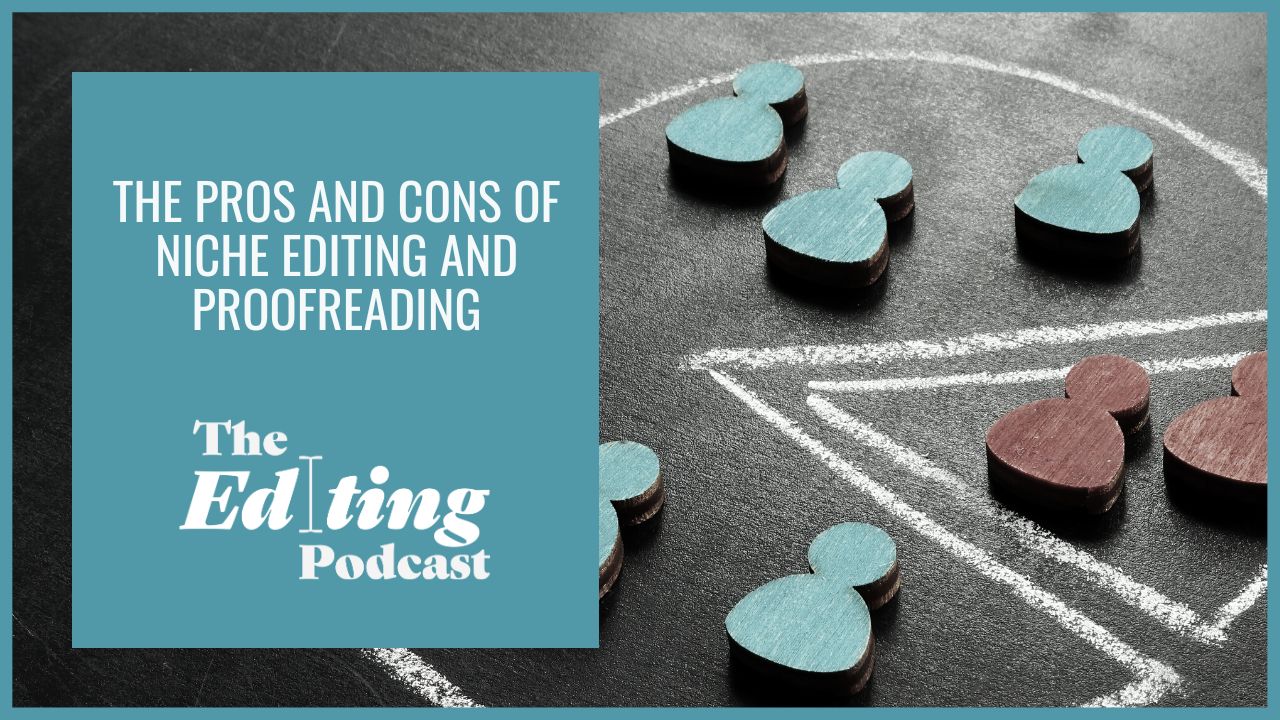

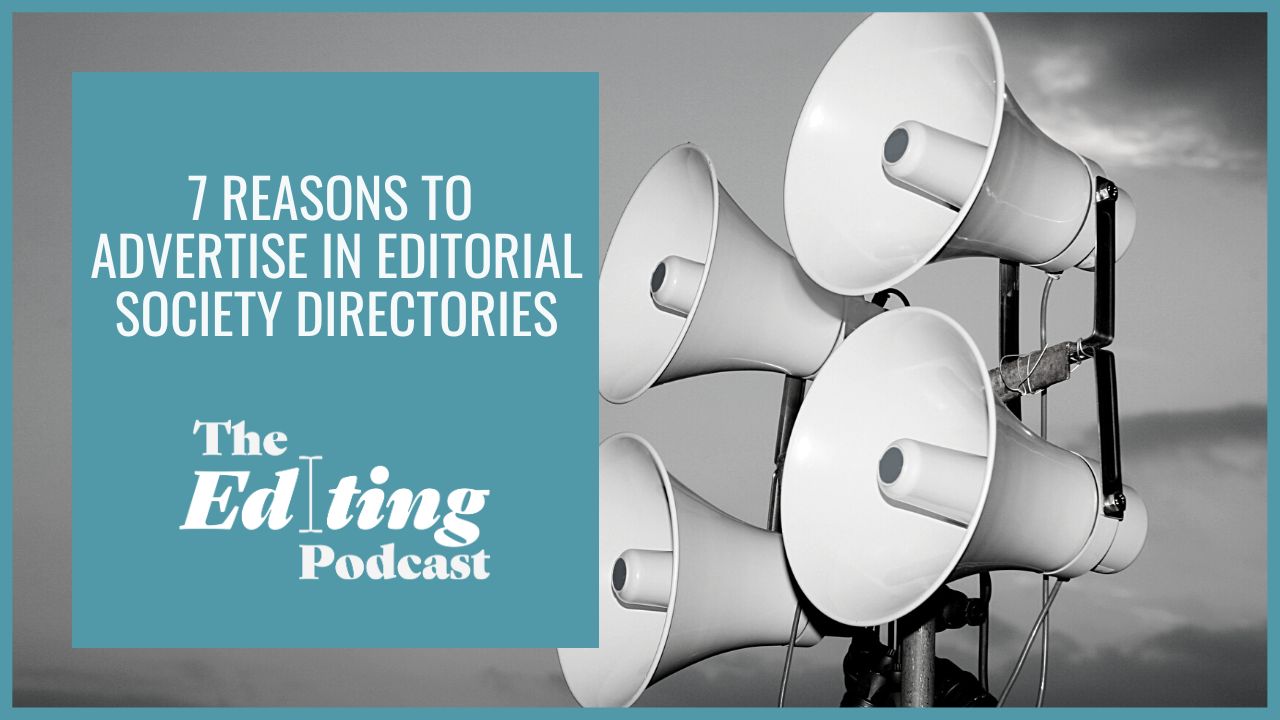

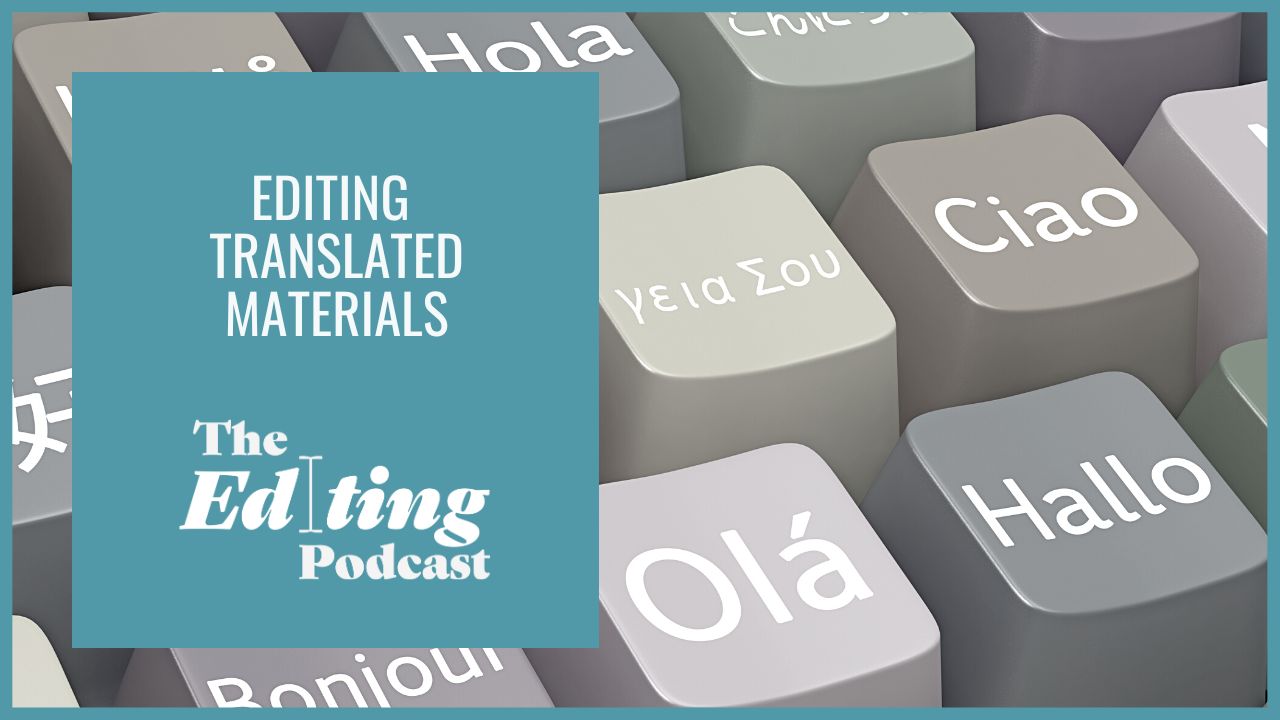



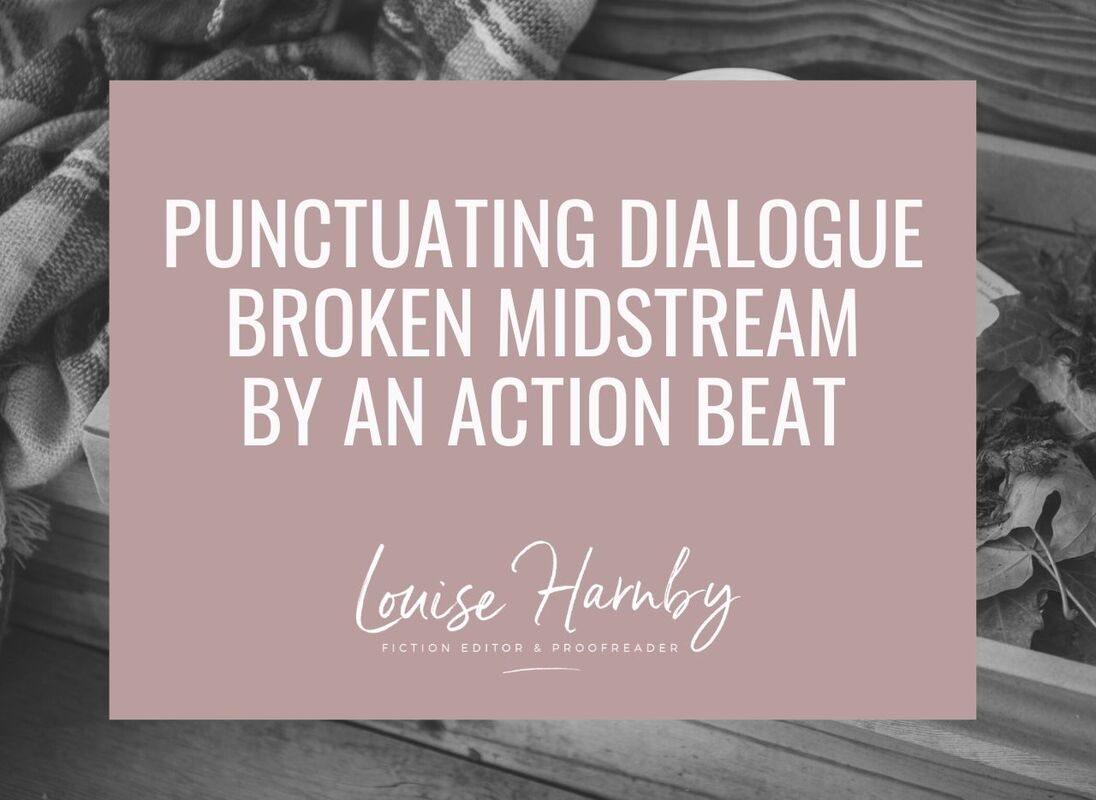

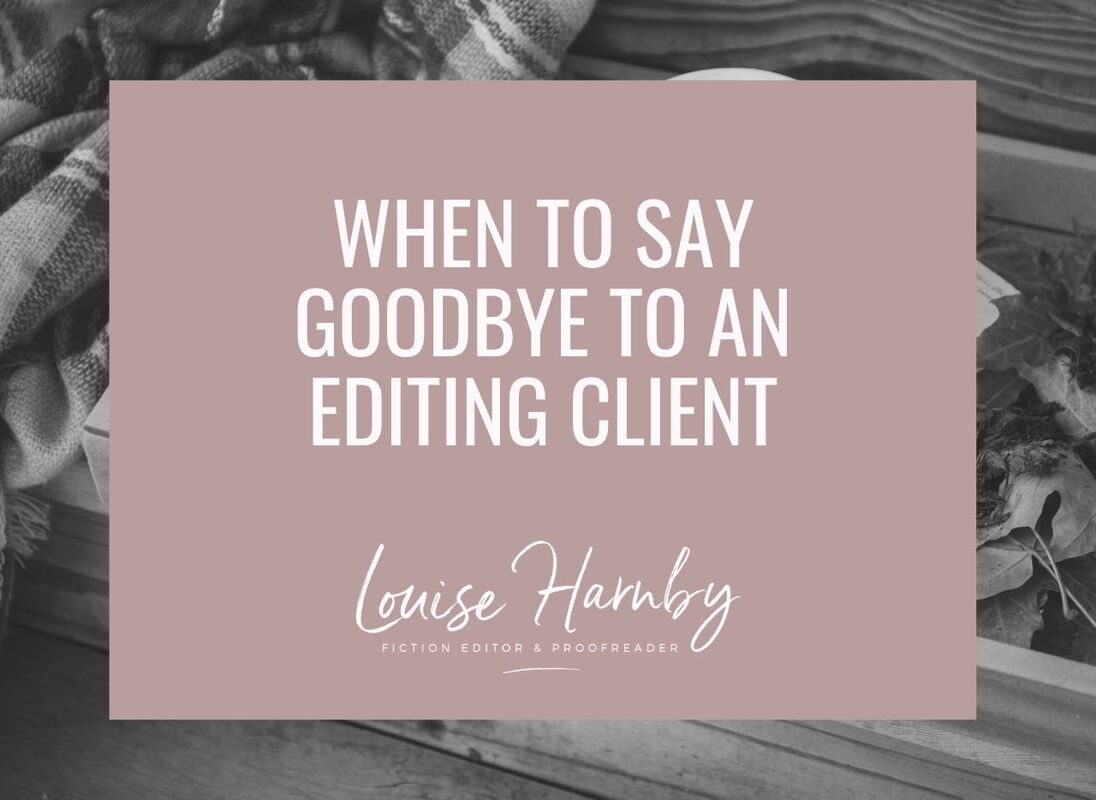













 RSS Feed
RSS Feed





